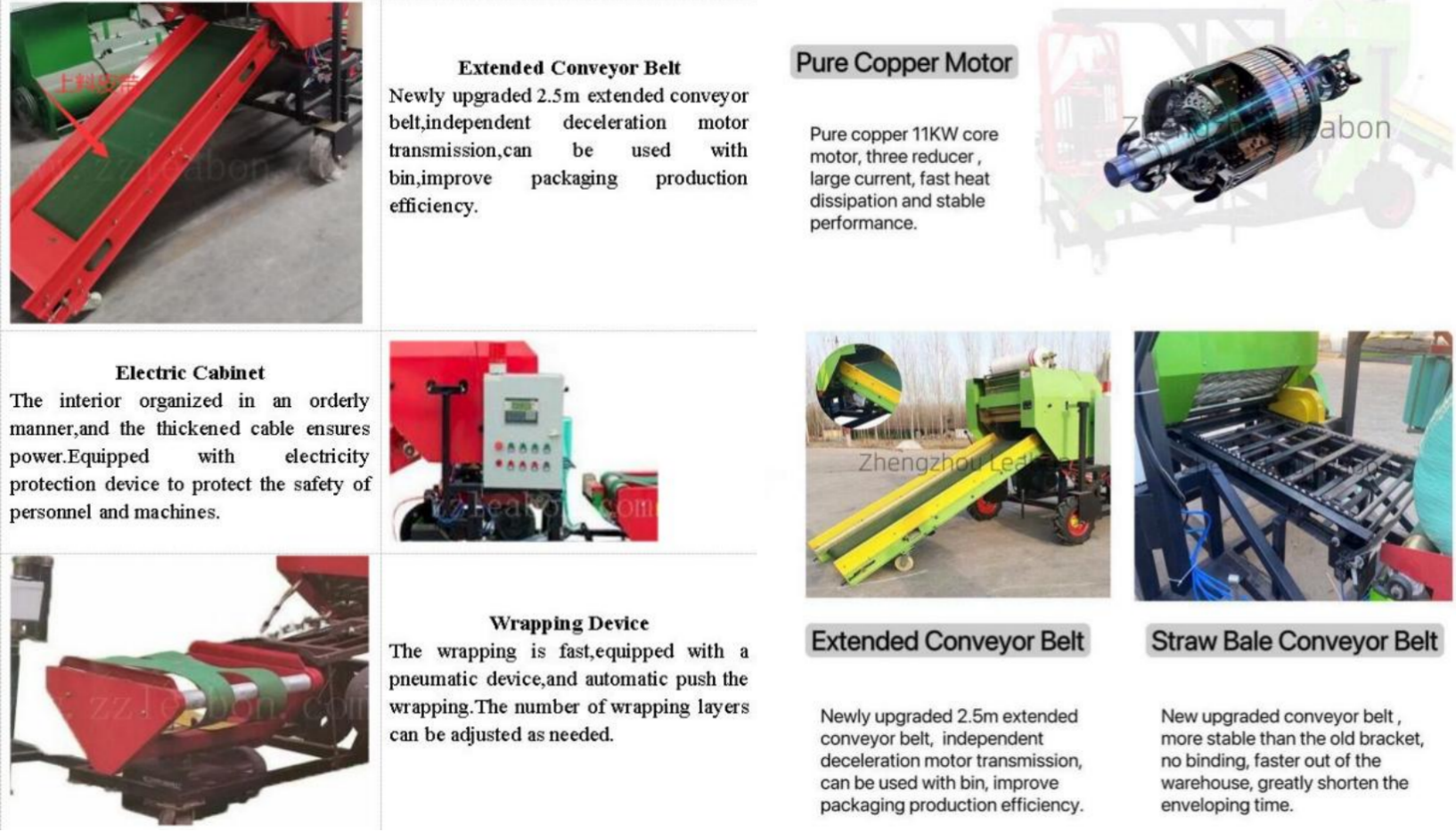Views: 1 Author: Site Editor Publish Time: 2025-02-12 Origin: Site

Description
Silage baler machine is applicable to the silage of corn stalks, alfalfa, sugarcane tail leaves, sweet potato vines, reeds, bean seedlings and sorghum grass. After adding water and packaging with microorganisms, the dried stalks can be silaged, which has high commercial value. It turns the waste of crops into treasure and improves the utilization rate of resources.

The working principle of the round bale silage baling machine
The round bale silage baling machine is a piece of machinery specially designed for compressing wet and heavy silage crops into round or cylindrical bales. Its working process usually includes the following steps:
●Feeding and compaction: The crops are uniformly fed into the machine's feed inlet and undergo initial compaction through a rotating roller system. When the bales reach the predetermined weight, the machine will automatically stop feeding and start winding.
●Winding and sealing: The bales are wound with one or more layers of plastic films (such as polyethylene films) to ensure their sealing and moisture-proof properties. After winding is completed, the machine will automatically open the outlet and discharge the bales.
●Automation operation: Most modern round bale silage balers adopt fully automated designs. With only one operator, the entire process from feeding to winding can be completed, significantly reducing labor costs.
The wrapped silage with grass mulch has the following characteristics compared with traditional silage methods such as pit silage, pile silage, tower silage, etc.
●The quality of silage feed is good. Due to the good sealing performance of the stretch film wrapped silage, the anaerobic fermentation environment for lactic acid bacteria is improved, the nutritional value of the feed is enhanced, the odor is fragrant, the crude protein content is high, the crude fiber content is low, the digestibility is high,with a utilization rate of up to 100% for livestock.
●There is no waste, moldy loss, fluid loss, or feeding loss. The traditional silage loss can reach 20%-30%.
●The preservation period is long. With good compaction and sealing performance, it is not affected by seasons, sunlight, rainfall, and groundwater levels. It can be stored for 2-3 years in the open air.

